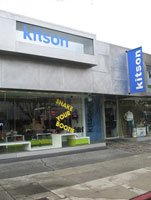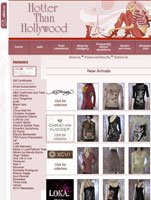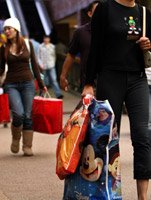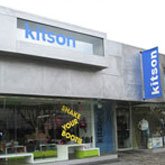Holiday 2007: E-Commerce and Menswear Sales Up
The 2007 holiday retail season was forecasted to be slow, but more consumers opened their wallets in the days leading up to Christmas, according to retail analysts.
The week before Christmas saw increased sales activity, said Spending Pulse, the retail-analysis division of Mastercard Advisors. Holiday retail sales increased 3.6 percent over the previous year, according to the organization’s data released on Dec. 25. Spending Pulse had initially forecasted holiday sales growth to be between 3.5 percent and 4 percent. Business slowed down the week after Christmas, according to the New York–based International Council of Shopping Centers. Retail sales dipped 0.2 percent from the prior week.
The final tally of holiday sales will not be announced until Jan. 10, when publicly held retailers report their December sales. However, retail trade groups—to varying degrees—warned that the season’s retail sales would be sluggish.
The International Council of Shopping Centers predicted a 2.5 percent increase in retail sales compared with the 2006 holiday shopping season. The Washington, D.C.–based National Retail Federation forecasted a 4 percent increase in retail sales.
There were significant growth spots in the 2007 holiday season. According to a Dec. 30 study by Reston, Va.–based market-research firm comScore Inc., e-commerce increased 19 percent compared with the same time in the previous year. The segment took in $28 billion during the holidays.
Glendale, Calif.–based e-fashion boutique Hotter Than Hollywood was one of the businesses that rode the crest of this e-tail wave. Its December 2007 sales tripled compared with sales the same time in the previous year, said Hotter Than Hollywood co-owner Mary Helen Shashy.
Menswear was another of the strong performers during the 2007 holiday season. Several high-profile specialty retailers—Kitson Men and Planet Funk, both based in Los Angeles; Villains, based in San Francisco; and M. Fredric, based in Agoura Hills, Calif.—said their menswear sales increased 20 percent during December compared with the same time in 2006.
The women’s contemporary category was another story for many retailers. “Contemporary women’s clothing [business] is as tough as nails,” said Fraser Ross, owner of high-profile retailer Kitson, based on Los Angeles’ stylish Robertson Boulevard.
Ross blamed the slow business for women’s contemporary on the heavy retail competition in the category. Ross said there was better business in menswear because there were not as many stores selling men’s fashions.
Some of the season’s slowest performers were department stores, where the holiday season was characterized by heavy markdowns. In the days after Christmas, Macy’s held a sale with markdowns of 20 percent to 65 percent throughout its stores. Sears was offering 60 percent off its fashion offerings. JCPenney also held after-Christmas sales with promotional discounts of 30 percent to 60 percent.
Retail analyst Jeffrey Van Sinderen of B. Riley & Co. in Los Angeles said the markdowns were more widespread than the 2006 holiday retail season. Department stores serving mid-level-income consumers might have suffered the most because those customers are the most affected by skyrocketing fuel prices and the fallout from the subprime mortgage market.
But some segments of the retail market, such as luxury stores, enjoyed good business during the holiday, Van Sinderen said. “I don’t think it was a catastrophic season,” he said. “It was just soft.”
Many retailers, such as Planet Funk principal Oren Hayun, said the drumbeat of slow holiday forecasts encouraged them to plan for a sluggish season. “For us it was not as hairy a ride as what people were bracing for,” said Hayun, who owns 18 Planet Funk stores in California. The weather also came to his aid. A cold-weather snap settled over Southern California in December, and consumers ran to his store to buy clothes for the cold, he said.
Despite tepid forecasts, others said much of the season’s sales were solid. Retail traffic at the Glendale Galleria shopping center in Glendale, Calif., was consistent with its retail traffic in 2006, said Janet LaFevre, senior marketing director of the shopping center.
“We’re still cautiously optimistic,” LaFevre said. She forecasted her shopping center’s sales would increase between 3 percent and 4 percent compared with the 2006 holiday season.
Among her shopping center’s strongest performers were The Disney Store, JCPenney, and the Apple and Coach boutiques. “People were gravitating toward known brands,” she said.
Gift cards are expected to make January business blossom, according to various retail analysts. The NRF forecasted that more than 56 percent of consumers planned on buying gift cards during the 2007 holiday season. Stacy Janiak, Deloitte & Touche’s U.S. retail leader, said many of them will be redeemed in January. “It’s important to remember that January, with gift-card redemptions and fresh winter merchandise, will be critical to retailers,” Janiak said.
However, the economic turbulence of 2007 might spell problems for the Southern California economy in 2008, according to Jack Kyser, chief economist for the Los Angeles County Economic Development Corp.
“We are on recession watch,” he said. The double hit of a troubled housing market and banks becoming more cautious in offering loans might spell a slowdown for the economy in the upcoming year. One bright spot is tourism, Kyser said. Since the dollar is weak, more tourists will be visiting and shopping in California, he said.

























